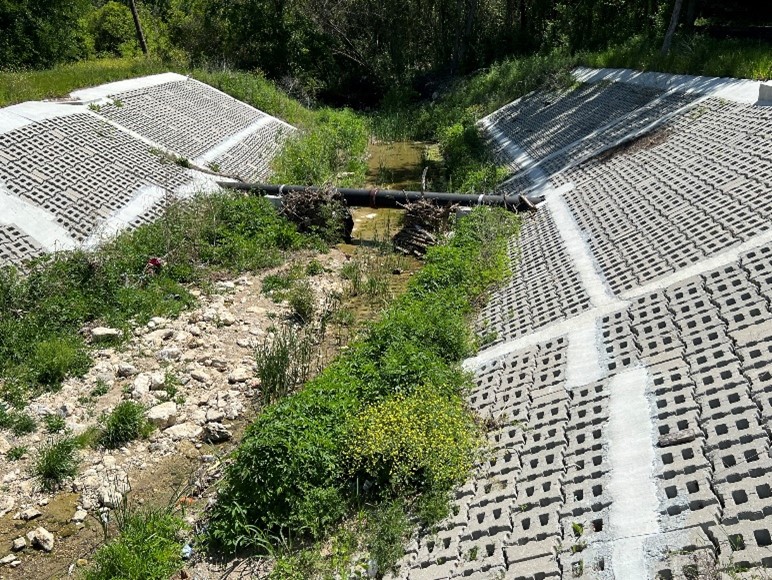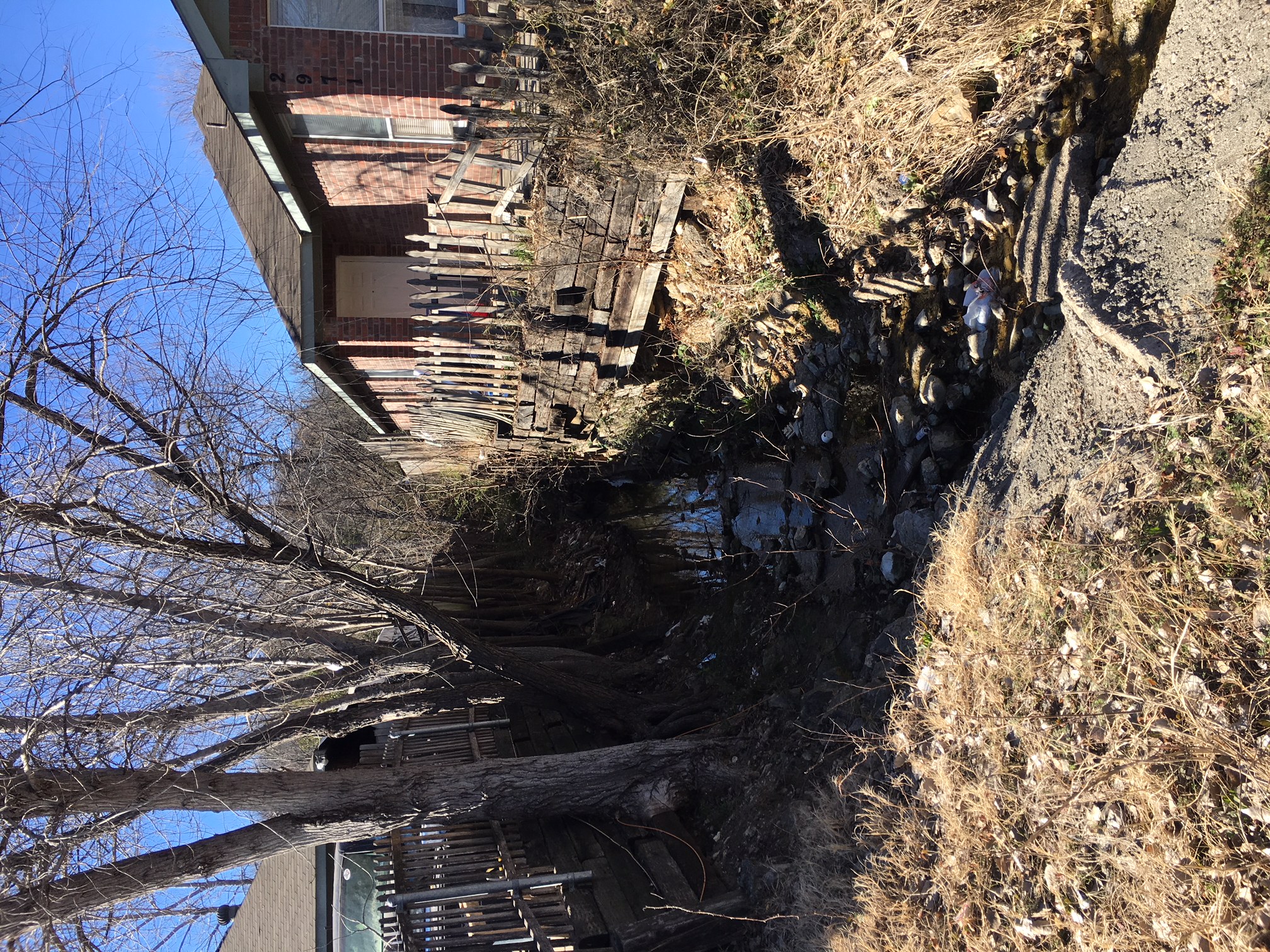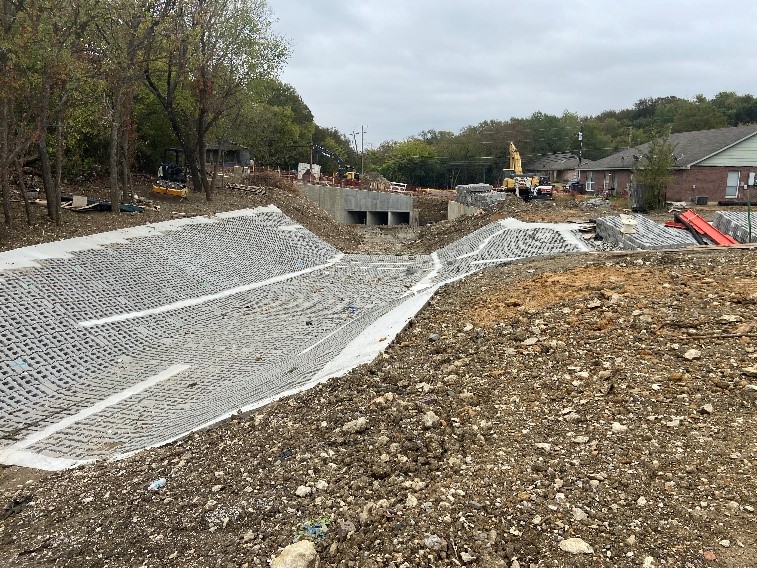
STREAM WATER GROUP, INC.
CONSULTING ENGINEERS

The existing roadway and surrounding properties faced persistent flooding during moderate rain events due to several contributing factors. These included a low-water crossing that restricted water flow, inadequate culvert capacity unable to handle runoff efficiently, and a reduced drainage channel capacity caused by residential construction encroaching on the creek. These issues disrupted the area and posed a risk to infrastructure and property. SWG was tasked with mitigating flooding in the area while ensuring no increase in downstream flood levels.
To address these challenges, SWG conducted a comprehensive drainage study, utilizing HEC-HMS and HEC-RAS modeling to analyze hydrological and hydraulic conditions. The team prepared a detailed study report, obtained necessary flood permits, and developed construction plans and specifications. The project also included quantity and cost estimates for the proposed culvert and drainage improvements.
The scope of the project featured several critical components:
Additional tasks included:
SWG delivered a comprehensive solution, balancing flood mitigation with regulatory compliance and environmental stewardship, ensuring the project met the community's needs and protected downstream areas.


